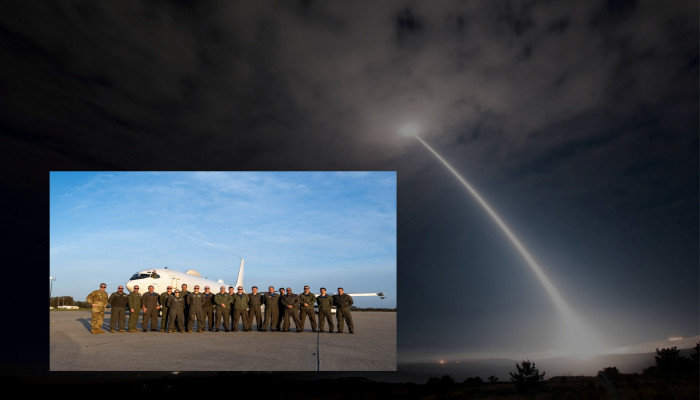Minuteman III ICBM test launch demonstrates readiness, reliability of US nuclear deterrent
- In Reports
- 08:16 PM, Nov 07, 2024
- Myind Staff
On November 5, the joint team of Air Force Global Strike Command Airmen and Navy aircrew successfully test-launched an unarmed Minuteman III intercontinental ballistic missile fitted with multiple targetable re-entry vehicle aboard the Airborne Launch Control System (ALCS) from Vandenberg Space Force Base, California
Airmen from the 625th Strategic Operations Squadron based at Offutt Air Force Base in Nebraska participated in a demonstration of the ALCS system aboard the U.S. Navy E-6B Mercury aircraft. This routine test launch, conducted periodically, aims to validate the safety, security, reliability, and effectiveness of the United States’ nuclear deterrent in the face of 21st-century threats and provides reassurance to allies. With over 300 similar tests conducted previously, this launch is part of established practice and is not a response to recent global events.
“These tests are demonstrative of what Striker Airmen bring to the fight if called by the president,” said Gen. Thomas A. Bussiere, Commander, Air Force Global Strike Command. “An airborne launch validates the survivability of our ICBMs, which serve as the strategic backstop of our nation’s defense and defense of allies and partners.”
The ICBM’s reentry vehicle travelled roughly 4,200 miles to reach the U.S. Army Space and Missile Defense Command’s Ronald Reagan Ballistic Missile Defense Test Site, located at the Kwajalein Atoll in the Republic of the Marshall Islands. The Reagan Test Site employs high-fidelity metric and signature radars, optical sensors, and telemetry to support research, development, testing, and evaluation efforts for U.S. defense and space programs. During these tests, RTS team members gather radar, optical, and telemetry data during the vehicle’s terminal flight phase to assess system performance.
“RTS is honoured to be the nation's only long-range land impact site providing our strategic partners a safe environment and truth in testing for the continued development of the ICBM modernisation efforts,” said Army Lt. Col. Casel Rumfelt, RTS Range Director. “This range and testing facilitate America’s technical advantage on the global stage. Our team brings decades of experience and a level of professionalism that makes the impossible seem easy in a no-fail environment. I couldn’t be prouder of this incredible team.” The test launch is a culmination of months of preparation that involve multiple government partners.
Air Force Global Strike Command, headquartered at Barksdale Air Force Base in the Shreveport-Bossier City area of Louisiana, is responsible for overseeing the nation’s three intercontinental ballistic missile wings, the entire Air Force bomber fleet—including B-52, B-1, and B-2 wings—the B-21 program, Air Force Nuclear Command, Control and Communications systems, as well as operational and maintenance support across the nuclear enterprise.
Around 33,700 professionals are assigned to two Numbered Air Forces, nine wings, two geographically separated squadrons, and one detachment across the U.S. and global locations. The LGM-35A Sentinel is set to replace the Minuteman III ICBM, with an initial capability target of 2029. Until the Sentinel reaches full capability in the mid-2030s, the Air Force remains committed to maintaining Minuteman III as a reliable deterrent.







Comments